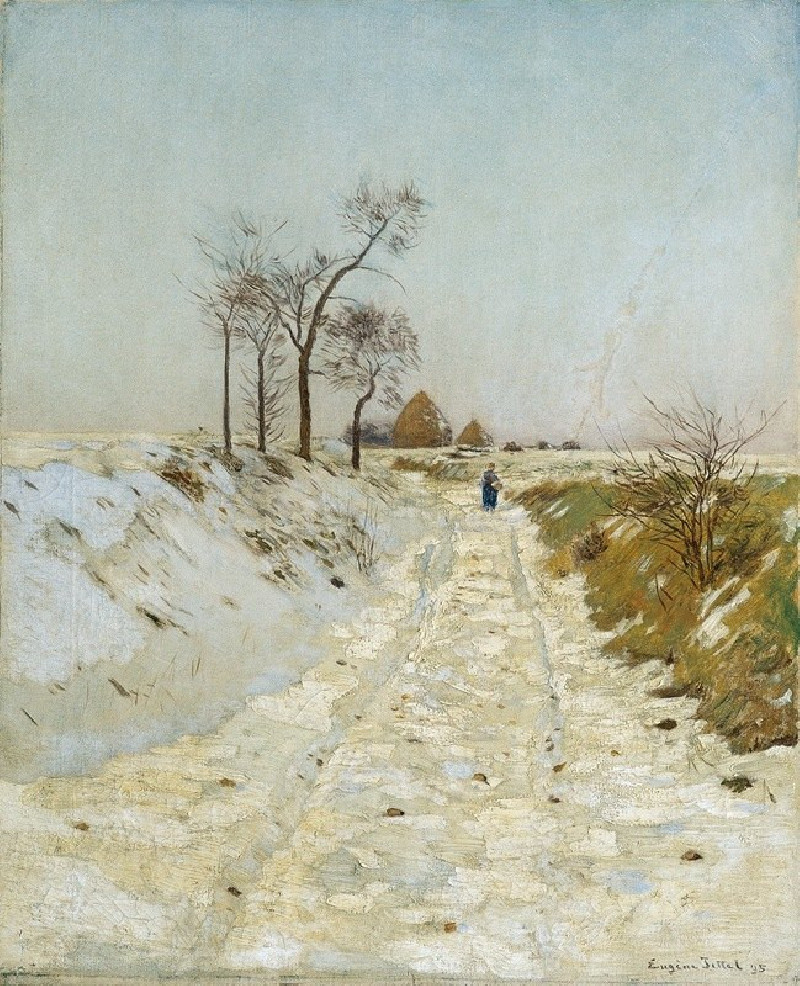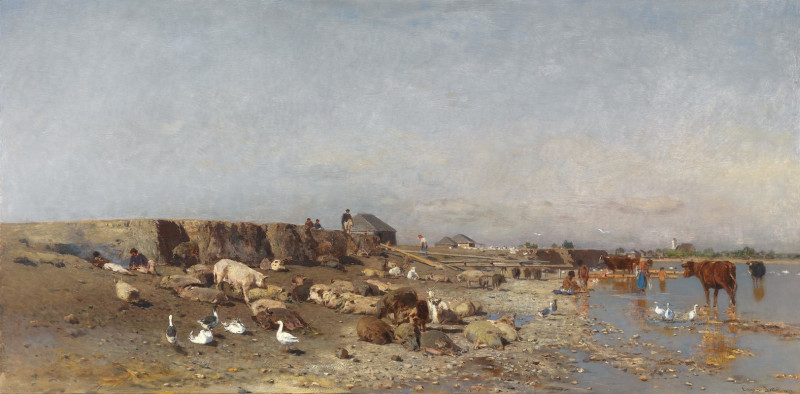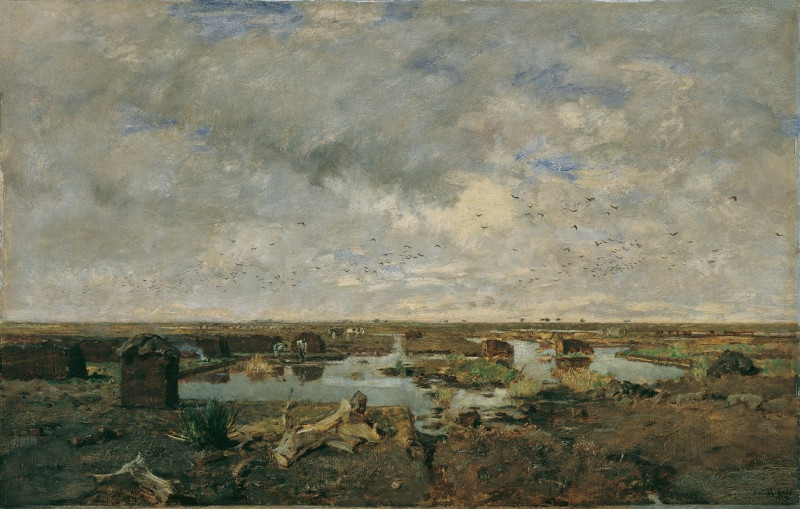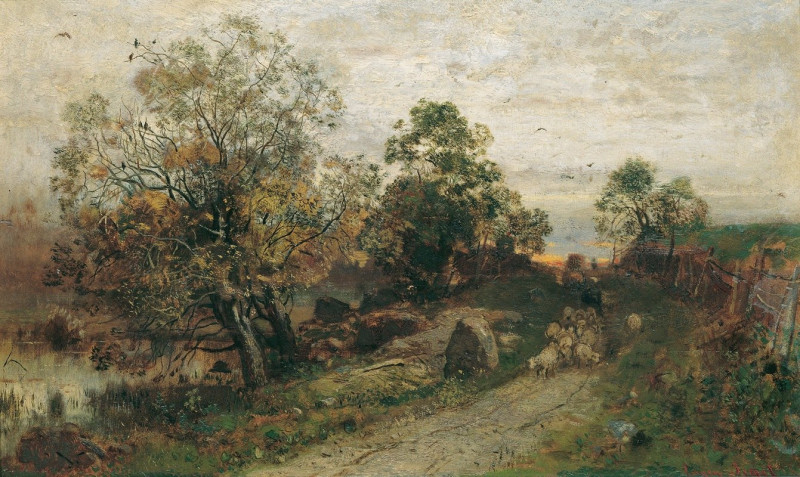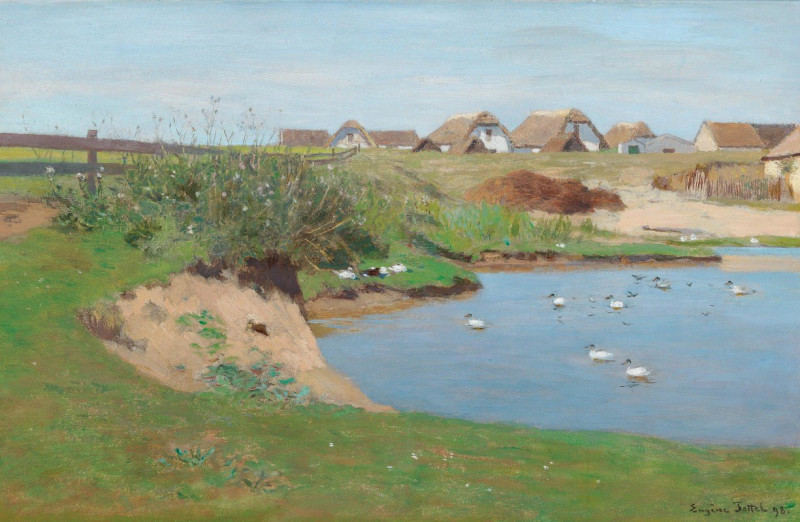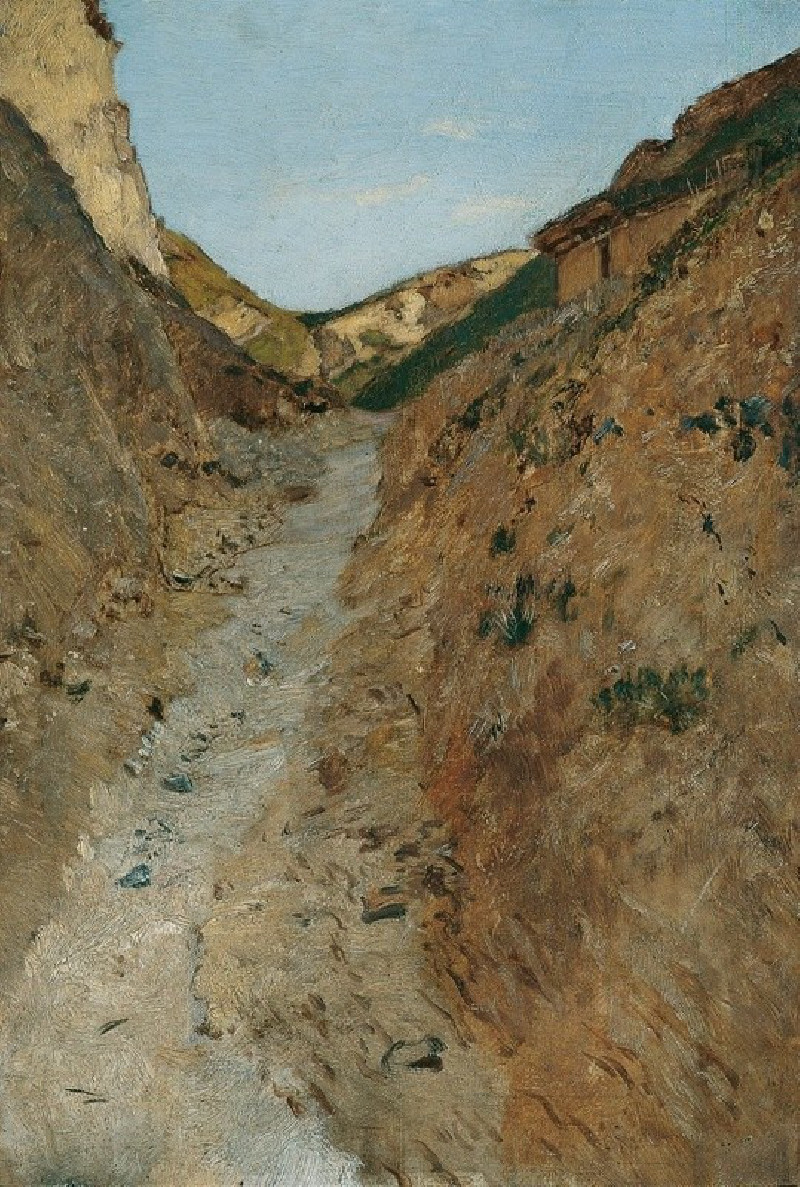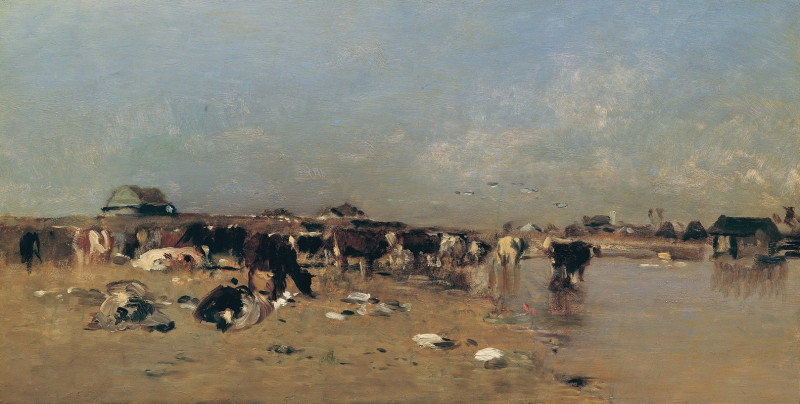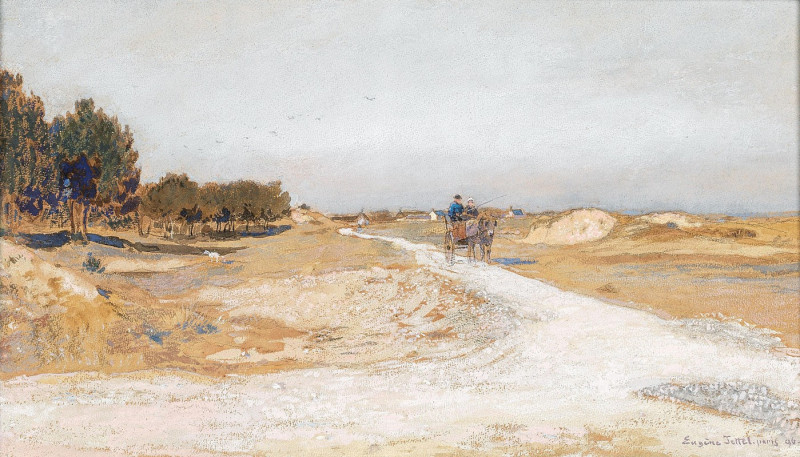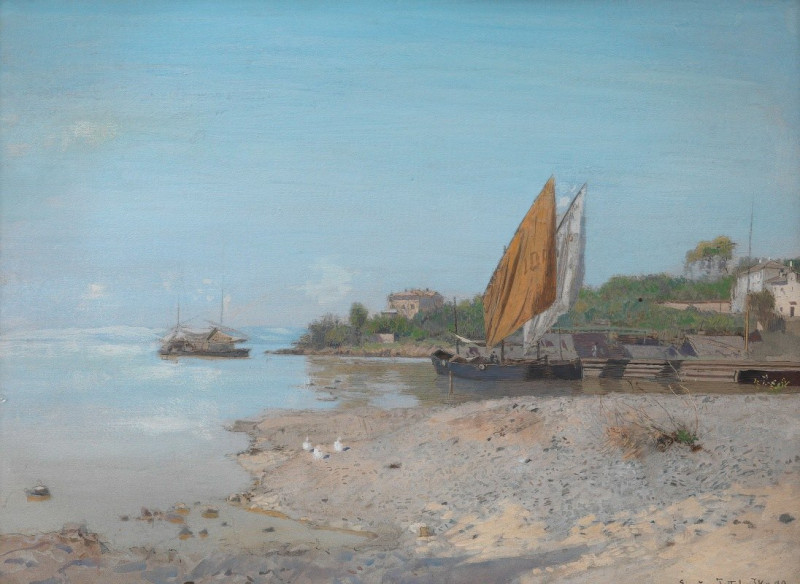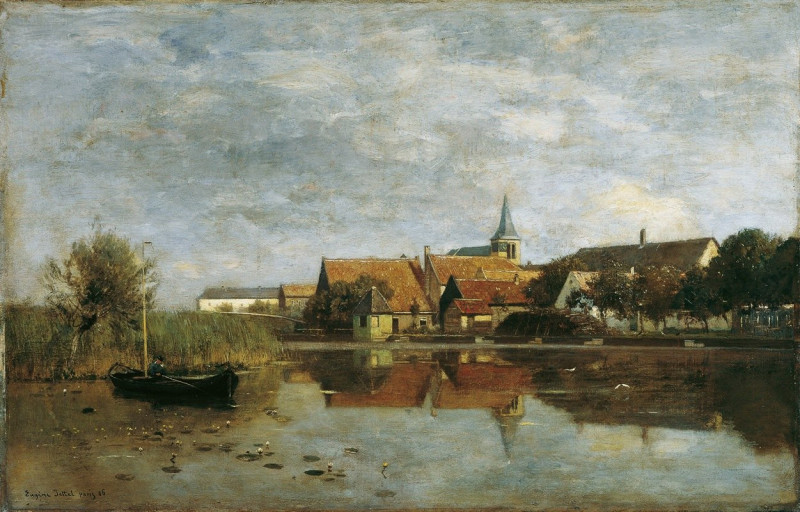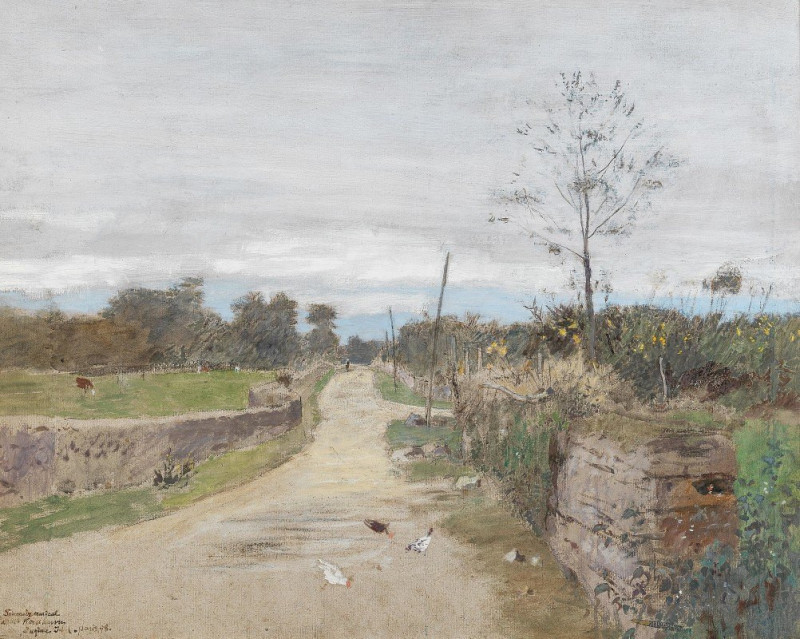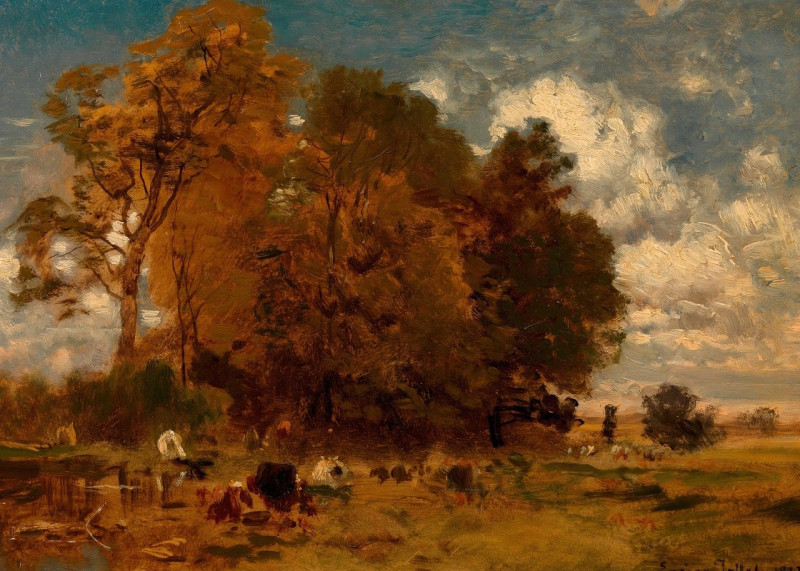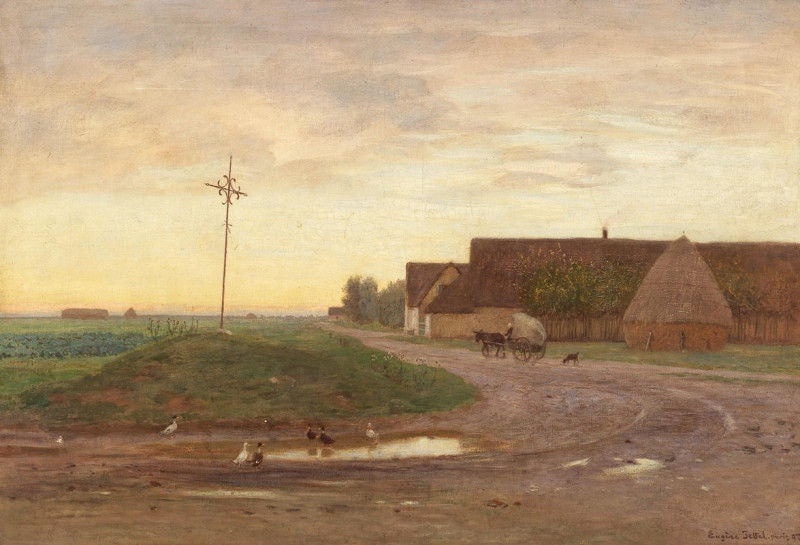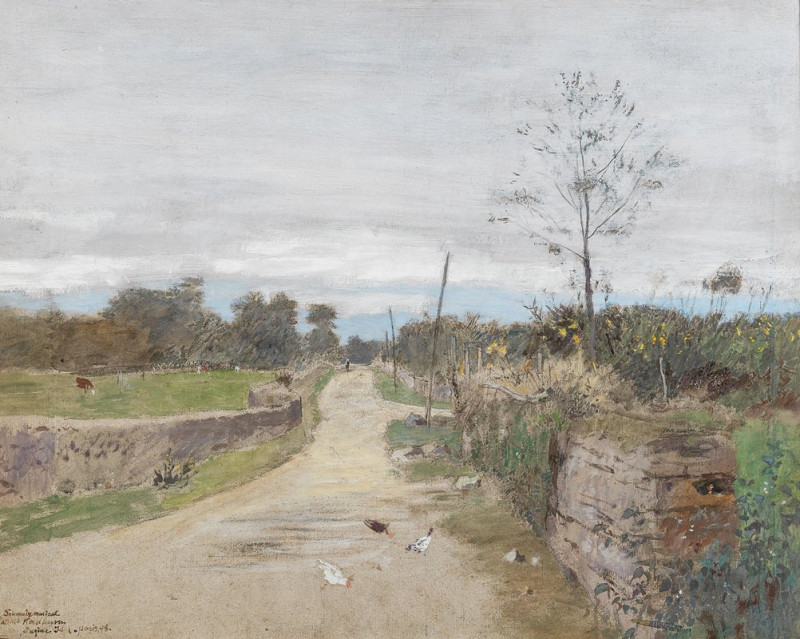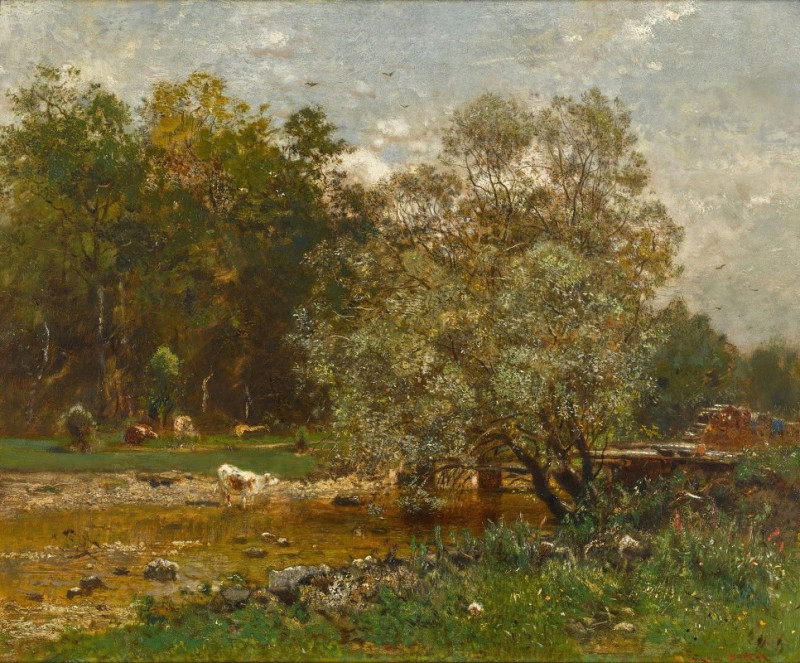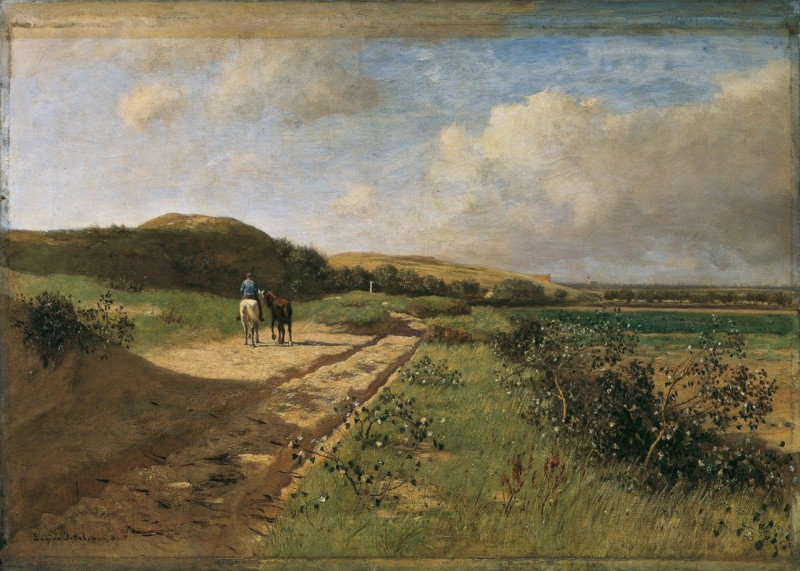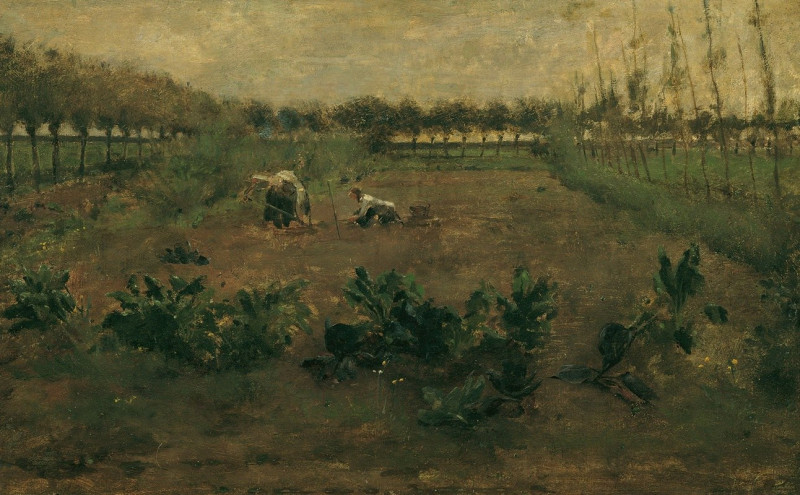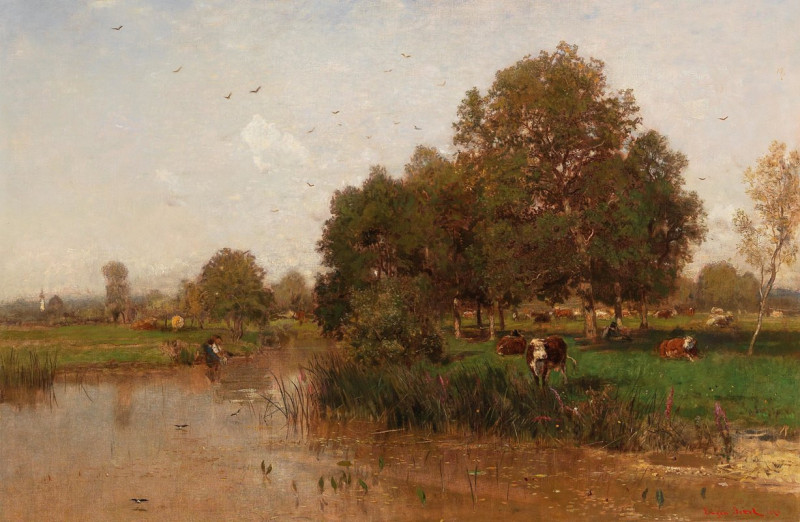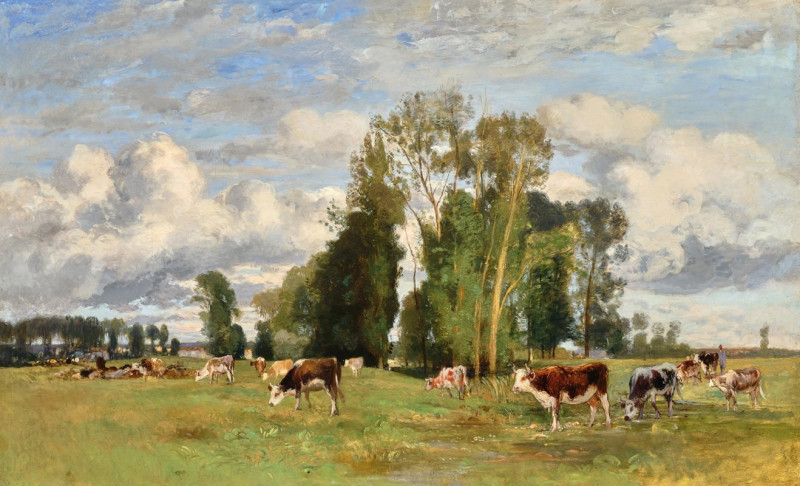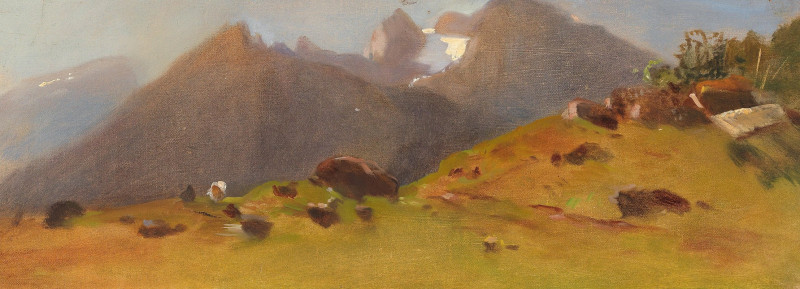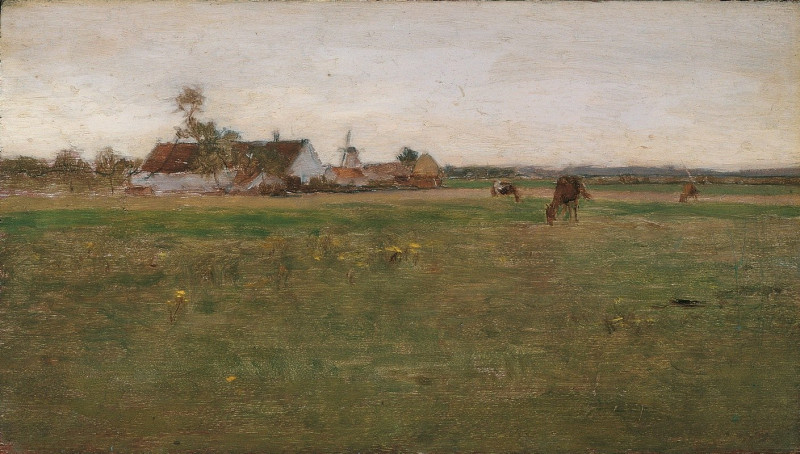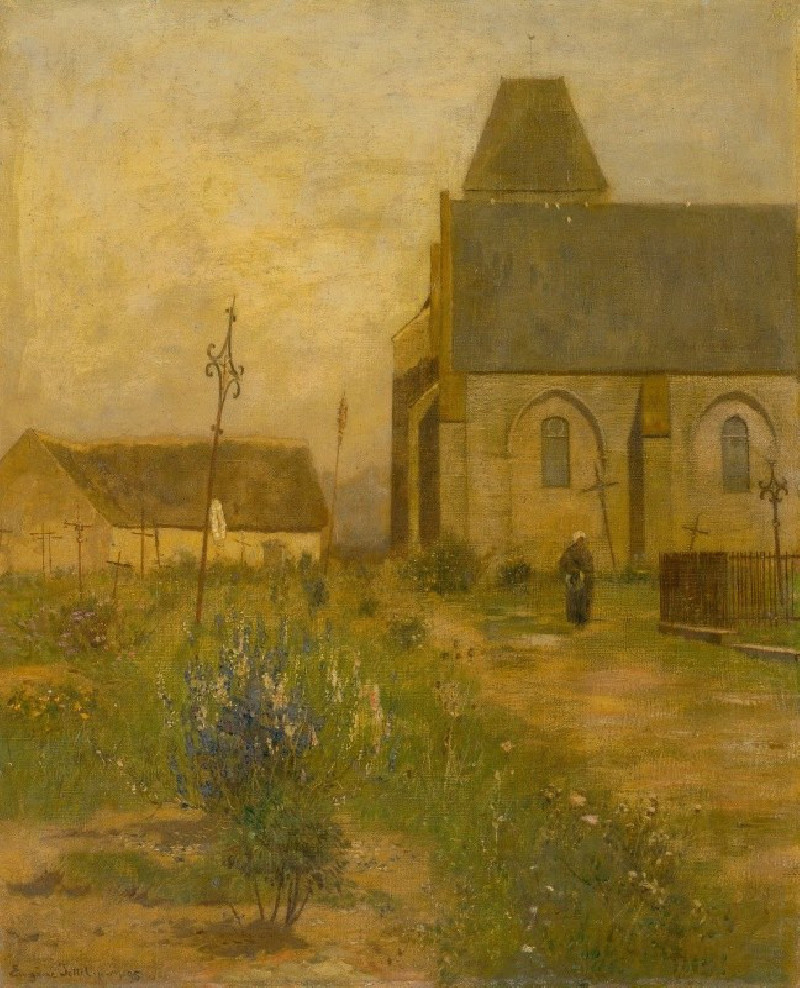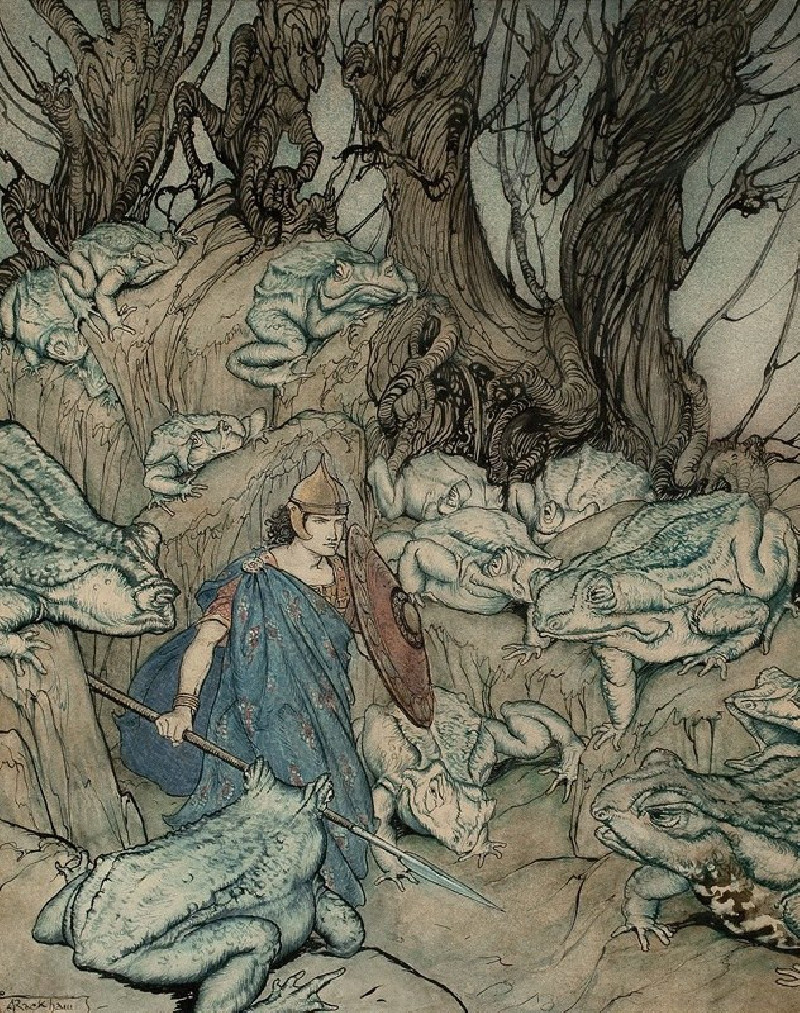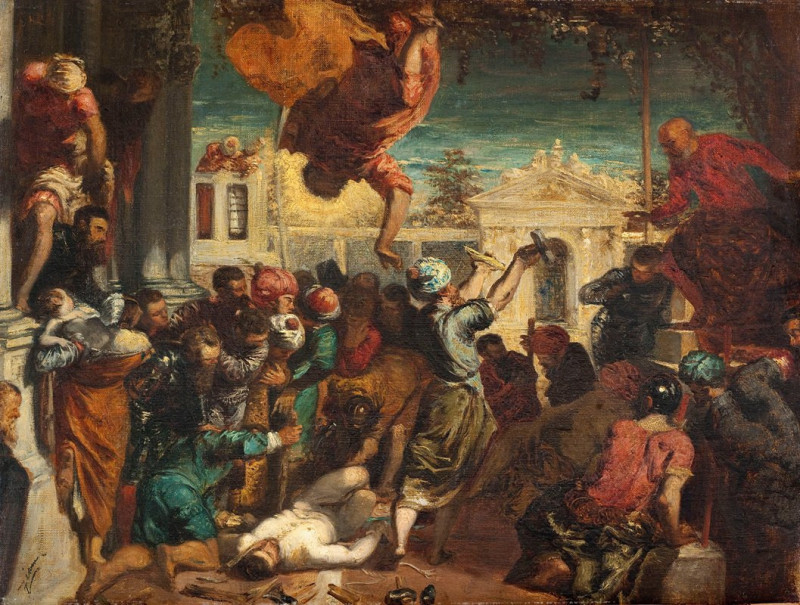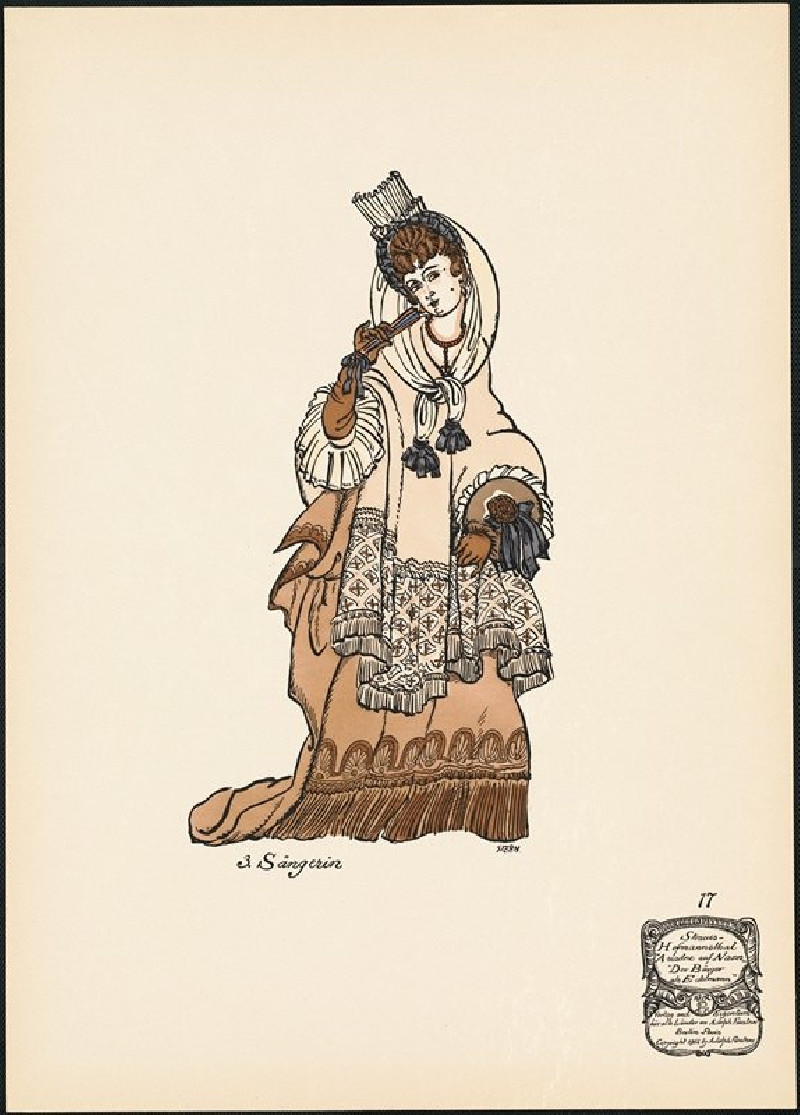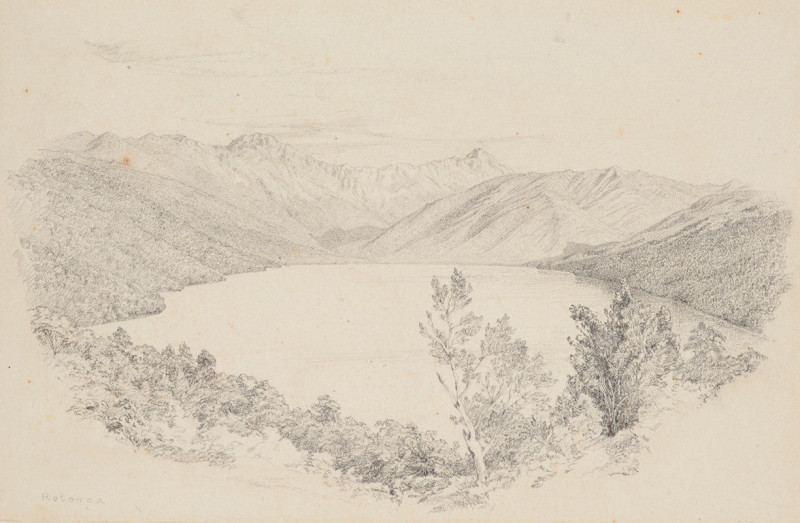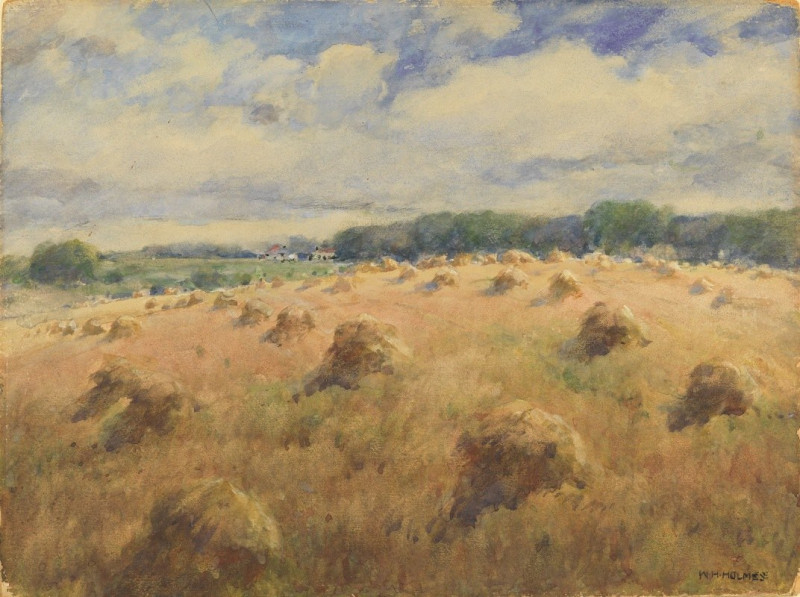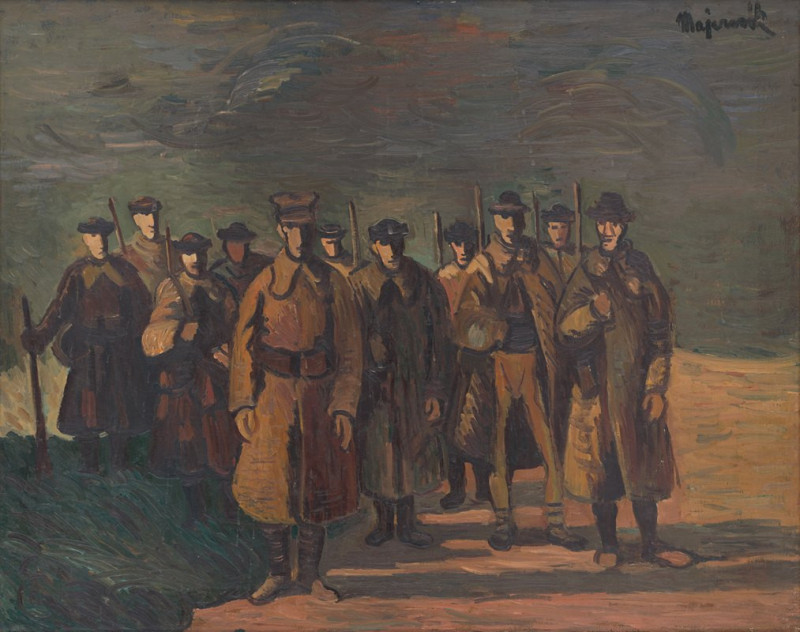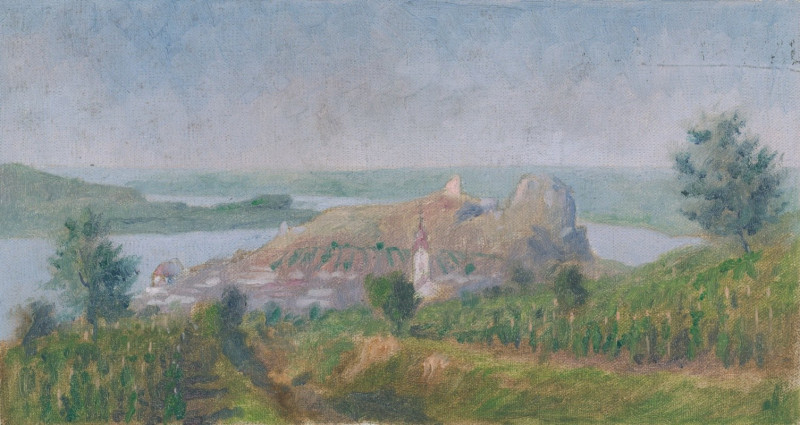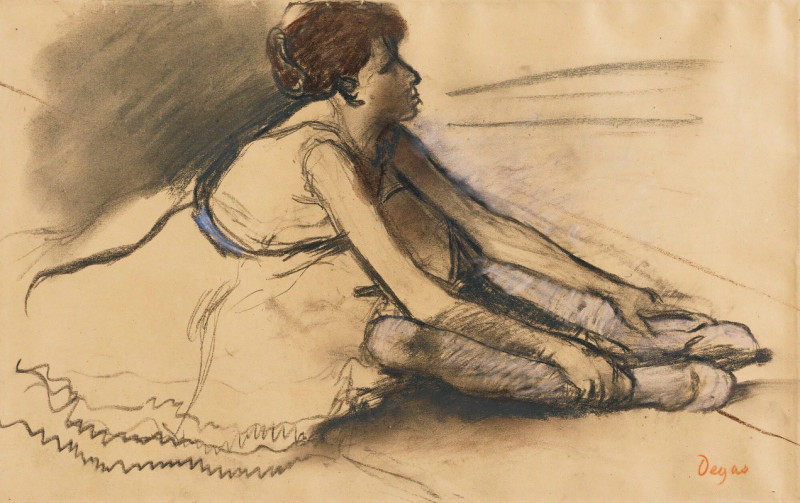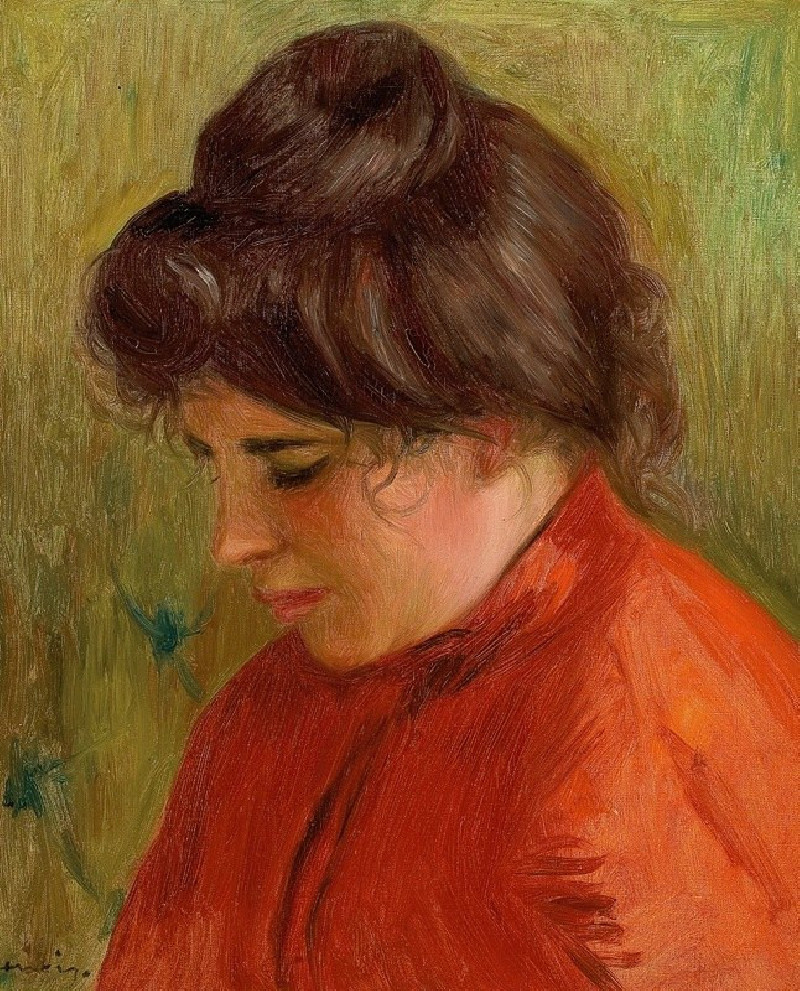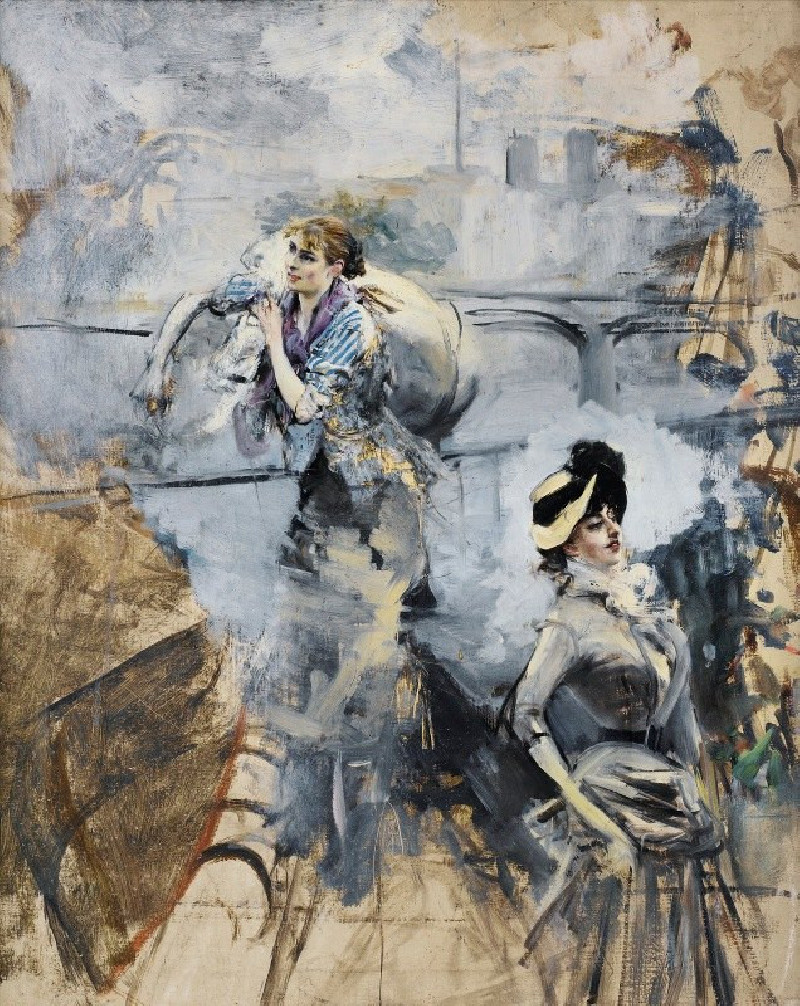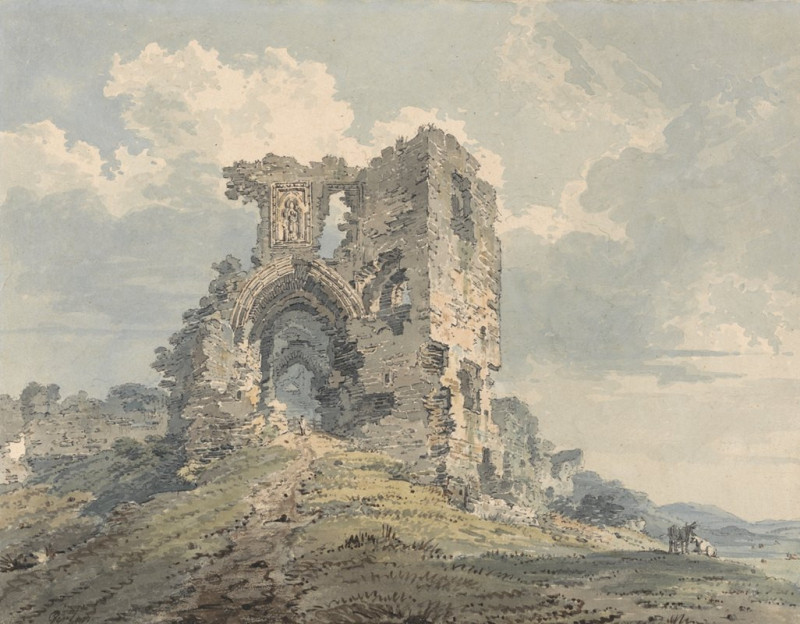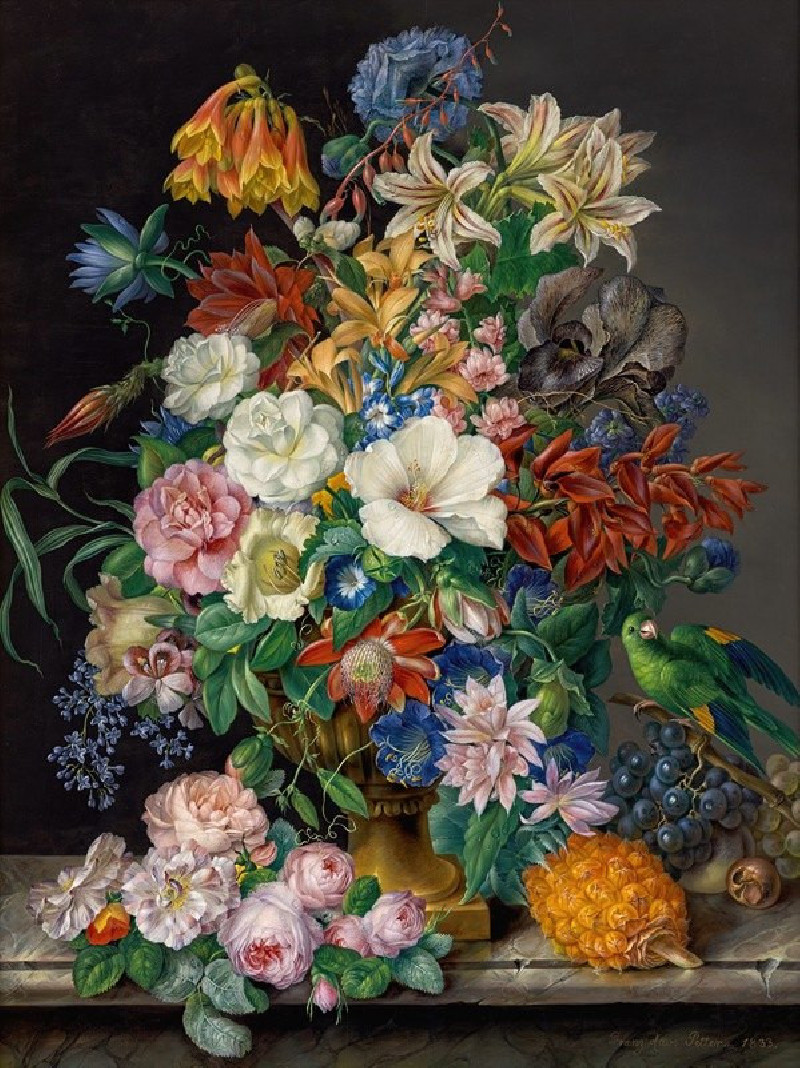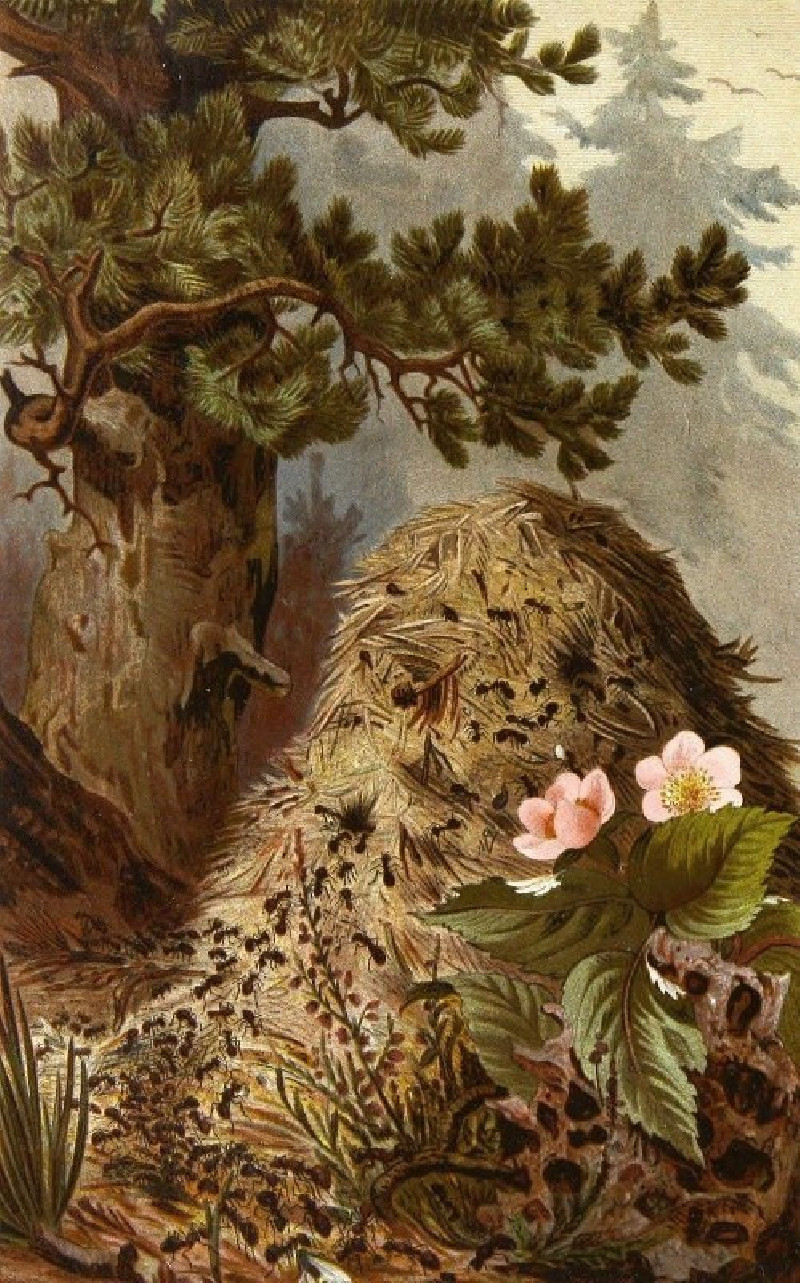Hohlweg im Winter (1895)
Technique: Giclée quality print
Recommended by our customers
More about this artwork
In the tranquil winter scene depicted in "Hohlweg im Winter," Eugen Jettel captures the stark yet serene beauty of a rural winter landscape. This 1895 painting features a snow-covered lane, or 'Hohlweg,' meandering gently through the chilly countryside. Subtly commanding the viewer's attention, the path is lined with sparse, leafless trees, their bare branches etched against a pale wintry sky.The painting showcases Jettel's skill in rendering the details of winter with great sensitivity. The muted color palette emphasizes whites, grays, and muted blues, conveying the cold atmosphere and the quietness of the scene. A solitary figure, small and distant, walks down the path, providing a human element that adds to the overall sense of solitude and introspection.Jettel's work is a masterful example of landscape painting from the late 19th century, inviting viewers to reflect on the stillness and simplicity of the winter season. "Hohlweg im Winter" is not just a depiction of a place, but an evocation of the quiet and contemplative mood that often accompanies the coldest time of year.
Delivery
Returns
Richard Alfred Eugen Jettel (20 March 1845 – 27 August 1901) was an Austrian painter, producing mainly landscapes. He studied at the Vienna Academy and moved to Paris in 1873, before moving back to Vienna in 1897 and serving as a co-founder of the Vienna Secession. He was made a Knight of the Légion d'honneur in 1898.

